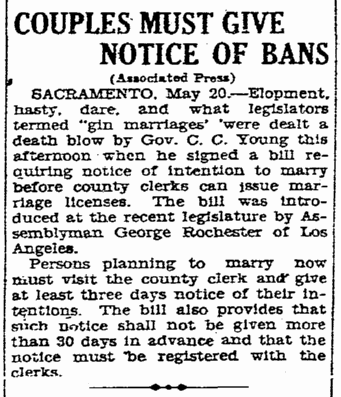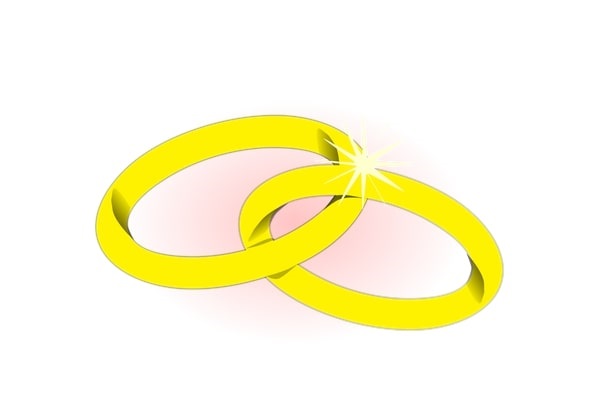Introduction: In this article, Gena Philibert-Ortega explains why gin marriage laws and Gretna Greens may have something to do with your ancestors’ marriage records appearing in unexpected newspapers from the 1920s and 1930s. Gena is a genealogist and author of the book “From the Family Kitchen.”
Where did you get married? Was it a town near where you lived? Did you run away to get married?
We often feel frustrated when we can’t find our ancestor’s marriage records in the most obvious place: the town they lived in. But let’s face it, not everyone gets married where they live. Maybe your ancestor chose to go to a “Gretna Green.”
What’s a Gretna Green?
Named after a city in Scotland, Gretna Greens are cities where couples run off to get married. According to the website The Gretna Wedding Bureau, Scotland historically has had lax requirements for marriage: a couple only had to be over 16 years of age and declare themselves husband and wife in front of witnesses. Because it was easy to get married in Scotland, people from neighboring countries flocked to marry there. Gretna Green was the first post along the route from England to the Scottish border, so it was a convenient wedding destination for eloping couples. Even today, Gretna Green, Scotland, continues to be a popular wedding destination.
There are Gretna Greens all over the United States. One of the most popular Gretna Greens is Las Vegas, NV. But even less glitzy places are popular wedding destinations for a whole host of reasons, especially places where couples can get married quickly without the requirement of blood tests, medical examinations or a marriage license. A Gretna Green might be the answer for couples who want to skip the hassle and expense of a traditional wedding and any disapproving family members.
Some people don’t want to wait to get married—for a variety of reasons.
Typically there is some time involved between the excitement of getting engaged and the actual wedding date. However, born out of a belief that those who married hastily, and perhaps while under the influence of alcohol, were more likely to divorce, some states enacted waiting periods between the time a marriage license was filed and the day the wedding could take place.
One state that enacted such a law was California. In 1927 California passed a “gin marriage” law. This law required a three-day waiting period from the time the couple purchased their marriage license until they could actually tie the knot.

As with any good intention there were some unanticipated results with this marriage legislation. While the law stopped couples from marrying quickly in California, it drove them to nearby out-of-state Gretna Greens such as Yuma, Arizona, and Las Vegas, Nevada, where they could secure “quickie” weddings. During one year of enforcement of California’s marriage law, Yuma—then a town of 5,000 residents—recorded 17,000 marriages! During the years of California’s gin marriage law, both Yuma and Las Vegas became the hip place for Hollywood stars and everyday people to get married.
Government officials started becoming wise to couples crossing state borders to marry in states with no gin marriage laws. In reaction, more laws affecting marrying couples were passed. Some of those laws required blood tests to check for venereal disease, as in the following example.
Here is another historical newspaper article about a gin marriage law, this one in New York.
This old newspaper article points out how effective the gin marriage law has been in curbing drunken couples from impulsively getting married in the middle of the night:
“At last the 3 a.m. marriage evil became intolerable. Dozens of young squirts with a snootful of bubble-water were wont to shoot to nearby Gretna Greens toward dawn, rout out sleepy but fee-hungry clerks and Justices, and become spliced before they had any notion what day it was, if any at all. This made dandy copy for the gaudier press, but it distressed the quieter element who still believed that marriages were not properly made in a tub of Scotch and soda.
“Jane Todd acted with her bill, and the law soon read that seventy-two hours had to elapse between license and the vows. Now a quick checkup reveals that it works fine.”
Can’t find an ancestor’s marriage record from the late 1920s or the 1930s? Maybe they decided to elope to a nearby Gretna Green. After all, who wants to wait when you’re in love?
Explore over 330 years of newspapers and historical records in GenealogyBank. Discover your family story! Start a 7-Day Free Trial
Note on the header image: an illustration of wedding rings.
